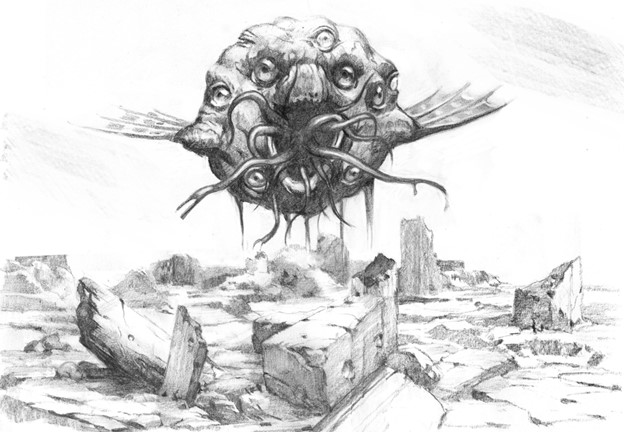
Back in 2021 I started listing out certain topics and content in Canon Shadow World that I thought should be re-examined and possible modified in any future work. One item I find particularly problematic is the introduction of the “Anti-Essaence”.
There are many threads to untangle in this subject and there are many threads on the RMForums and the Discord channels that touch upon it. Certainly everyone’s approach will be driven by their own campaign, ethos and background, but one of the first things I found appealing about Shadow World was it’s moral relativism. The inclusion of the “Anti-Essaence” feels very much like an attempt to square some circles created by the Unlife in general.
Many fantasy games have clear dualities, with opposing forces of absolute good and evil and graduations in between (alignment system of AD&D). The need for absolute evil is clear justification of any player actions within the game system, and simplified the narrative and direction of player action.
So before we get to the Anti-Essaence let’s review Terry’s thoughts on evil per the Master Atlas 4th Ed.
“Good” and “Evil” fall at the two extreme ends of a spectrum;
most thinking beings exist somewhere in the middle
ground.….
True Evil, the evil that is fostered by the Unlife, is the drive to destroy—
and to feed on that destruction.…
Without attempting to make a judgment on what is “evil” and
what is not, the concept of pure, true, universal evil in the context
of Shadow World applies only to the Unlife and its willing
servants….
So obviously this leads to a number of problems discussed ad nauseum:
- Are there inherently evil races?
2. Are Demons of the Unlife?
3. What’s the deal with the Dragonlords?
4. How do you tap into the power of the Unlife?
5. How does Unlife corruption work?
6. Are there 2 sets of power points?
7. Are Spell Law Evil Spells of the Unlife?
7. If “Evil Spell Lists” are channeled from the Unlife, how does an Essence Magic User actually be a Channeler?
There seems to be clear demising wall established by Terry, if they aren’t of the Unlife, they aren’t “True Evil”–whatever that might mean for you. But then we bring in the Anti-Essaence.
The Anti-Essaence concept seems more of “rule for rules” to try and patch up or systemized a muddy system. But the problem is that the Essaence isn’t actually the opposite of the Anti-Essaence: the Essaence is just power, neutral in nature. It’s application can be either beneficial or hurtful; but is it really “True Evil”? Are Sorceror spells any less or more evil than the Evil Magician spell list solid destruction? What isn’t evil about a fireball painfully incinerating an opposing force? Is subjugating a person against their will with a Charm spell, good and just?
Let’s examine this through the lense of the Dark Gods. Is Andaras absolutely evil and a user of the Unlife? (I know a few cat owners who would think so!!). Many of the Dark Gods have easily found, public temples in all the major cities. Does it make sense that a incomprehensible entity of undying malevolence, that seeks the destruction of all life would manage and maintain the administration of a such a temple? Would that God even be tolerated in a city? It’s clear that Terry doesn’t treat the Dark Gods as “Gods of the Unlife”. (In my SW, the Dark Gods are outcasts from Orhan which makes far more sense)
How did the Anti-Essaence get inserted into Shadow World? The source of power of the Unlife needed to fit into the Realm and magical system. There needed to be a game mechanism to model “power corruption” and thus the concept of the “Anti-Essaence” was included into the Master Atlas.
I don’t believe it was necessary and I see no issues with Essence or Mentalism users being corrupted and essentially becoming “Channelers” of the Unlife. Don’t you already allow the logically inconsistent “hybrid” spellusers in Rolemaster?
In short, “Anti-Essance” isn’t necessary, it doesn’t clarify any confusion and it complicates an intangible framework of morality. The Unlife is a nihilistic force destruction. It’s easy to oppose, but it doesn’t need to fit into our good/evil framework.








